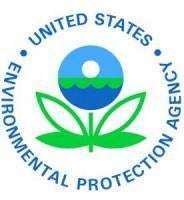(BOSTON) – The U.S. Environmental Protection Agency (EPA) today announced decisive action to control currently unregulated stormwater pollution from entering unchecked into the watersheds of the Charles, Mystic and Neponset Rivers and control those pollutants under the Clean Water Act. This is the first time that EPA has exercised its residual designation authority under the Clean Water Act on such a broad scale to address watersheds in a major urban area. The innovative effort is expected to dramatically improve water quality throughout the watersheds, as well as reduce localized flooding and increase recreational opportunities through healthier river systems in historically disadvantaged neighborhoods.
"On the eve of the 50th anniversary of the Clean Water Act, EPA is taking strong, decisive action to ensure that all our citizens have access to local waterways that support enjoyment and recreation. It is clear that the nature and scale of the problem requires urgent action on this pressing environmental justice concern," said EPA New England Regional Administrator David W. Cash. "With a warming climate there is no time to waste to reduce bacterial and nutrient pollution in stormwater and the resulting water quality degradation including harmful algae blooms experienced yearly in all three watersheds."
Beginning in 1995, with the Clean Charles River Initiative, EPA has worked closely with the Commonwealth of Massachusetts, local communities, other organizations and individual citizens to restore water quality in the three major Boston-area urban rivers. These efforts have yielded significant water quality improvements in portions of all three watersheds, especially by reducing bacterial contamination. However, stormwater pollution continues to be the largest uncontrolled source of phosphorus, nitrogen and bacteria – which is harming water quality in each of the three river watersheds; nitrogen and phosphorus also lead to toxic algal blooms in hot weather events.
Under today's action, EPA is utilizing a Clean Water Act provision called "residual designation authority," under which the Agency will require permit coverage for stormwater discharges from currently unregulated and uncontrolled sources of stormwater pollution in the Charles, Mystic and Neponset River watersheds. Certain commercial, industrial, and institutional properties with one or more acres of impervious area (hard surfaces like parking lots, roofs, and roadways that make it difficult for stormwater to soak into the ground) will be required to obtain coverage under an EPA Clean Water Act permit. Once permits are issued, property owners will be required to take steps to reduce pollutants in stormwater.
EPA anticipates issuing one or more general permits specifying the activities that property owners must implement to reduce stormwater pollution from their properties. Privately owned commercial, industrial, and institutional properties with 1-acre or greater impervious cover will need to seek coverage under one of these permits (or an individual permit if they prefer) and take the actions spelled out in the permits. The general permits will be released in draft form for public comment in the future. Public comments on this determination will also be accepted at that time, consistent with EPA regulations.
The eventual new permit will likely rely on well-proven and easily implemented "Best Management Practices" (BMPs) – including leaf litter pickup, parking lot sweeping, installing rain gardens or other infiltration practices, planting trees, reducing pavement or utilizing pervious pavement – to reduce stormwater discharges into waterways and increase infiltration of stormwater back into the earth. These BMPs will have a direct and measurable benefit to local communities by reducing polluted stormwater and also several other secondary benefits of an improved living environment – less impervious pavement, more green infrastructure, and reduced local heat island effect.
Municipal governments in Charles, Mystic and Neponset River watershed cities and towns are already subject to EPA permits that require them to take steps to reduce pollution in stormwater, and they have made significant investments to do so. However, much of this pollution comes directly from stormwater originating from certain commercial, industrial, and institutional sources – such as office parks, industrial parks, shopping centers, private colleges and universities, and hospitals – which are not currently required to be covered by an existing permit. Today's action prepares the way for greater accountability and places responsibility for cleaning up pollution squarely on those responsible – greatly reducing the burden faced by cities and towns throughout these watersheds.
Large impervious areas are one of the last major unregulated sources of water pollution, and a chief culprit in dramatic algal blooms – including toxic cyanobacteria – as well as high bacteria levels that have plagued the Charles, Mystic, and Neponset in recent years. Extensive impervious cover also aggravates the severity of flooding because those areas diminish the amount of land that can naturally soak in and filter rainwater.
Effective, common sense stormwater control also has an added benefit of mitigating the potential for flooding during major precipitation events. Stormwater controls such as those envisioned by EPA to comply with this future permit will help reduce the severity of flooding. Capturing stormwater for infiltration back into the land helps ensure a clean and safe water supply, replenishes depleted groundwater, and filters contaminants out of stormwater before it enters lakes, ponds, rivers or streams.
For decades, EPA's efforts to address water quality impairment in the Charles, Mystic, and Neponset Rivers has featured coordinated efforts among EPA, state and local governments, private organizations, and environmental advocates. Cities and towns in the watersheds have invested hundreds of millions of dollars in stormwater and sewer improvements. As a result, much progress has been achieved making the rivers safer for recreation, such as boating and, in some cases, swimming. By employing residual designation authority, EPA is today addressing one of the last remaining unregulated sources of pollution harming the rivers.
Read the full press release on the Environmental Protection Agency website here.




 />i
/>i
